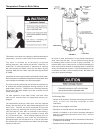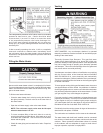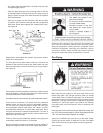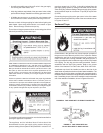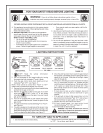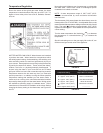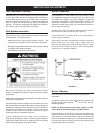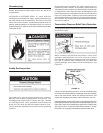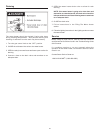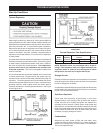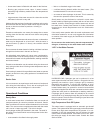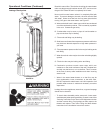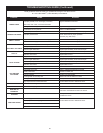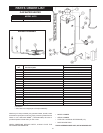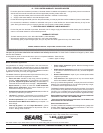
23
TROUBLESHOOTING GUIDE
StartUpConditions
ThermalExpansion
Water supply system may, because of such events as high line
pressure, frequent cut-offs, and the effects of water hammer have
installed devices such as pressure reducing valves, check valves,
backowpreventers,etc.,tocontrolthesetypesofproblems.
When these devices are not equipped with an internal by-pass,
and no other measures are taken, the devices cause the water
system to be closed. As water is heated, it expands (thermal
expansion) and closed systems do not allow for the expansion
of heated water.
The water within the water heater tank expands as it is heated and
increases the pressure of the water system. If the relieving point
ofwaterheater’stemperature-pressurereliefvalveisreached,
the valve will relieve the excess pressure. Thetemperature-
pressurereliefvalveisnotintendedfortheconstantrelief
ofthermalexpansion. This is an unacceptable condition and
must be corrected.
It is recommended that any devices installed which could create
a closed system have a by-pass and/or the system have an
expansion tank or device to relieve the pressure built by thermal
expansion. Thermal expansion tanks are available from Sears
stores and through the Sears Service Centers. Contact the local
plumbing inspector, water supplier and/or the Sears Service
Center for assistance in controlling these situations, see Figure
26 and Figure 26 A.
FIGURE 26.
FIGURE 26A.
ThermalExpansionTankSpecications
TankDimensions Pipe
Model Capacity
inInches Fitting
Number InGallons Diameter Length OnTank
153.331050 5 11(279mm) 14-3/4(375mm) 3/4”Male
NOTE:Expansiontanksarepre-chargedwitha40psiair
charge.Iftheinletwaterpressureishigherthan40psi,the
expansiontank’sairpressuremustbeadjustedtomatch
thatpressure,butmustnotbehigherthan80psi.
StrangeSounds
Possible noises due to expansion and contraction of some metal
parts during periods of heat-up and cool-down do not represent
harmful or dangerous conditions.
Condensation causes sizzling and popping within the burner area
during heating and cooling periods and should be considered
normal. See Condensation section.
DraftHoodOperation
Check draft hood operation by performing a worst case
depressurization of the building. With all doors and windows
closed, and with all air handling equipment and exhaust fans
operating such as furnaces, clothes dryers, range hoods and
bathroomfans,amatchameshouldstillbedrawnintothedraft
hoodofthewaterheaterwithitsburnerring.Iftheameisnot
drawn toward the draft hood, shut off water heater and make
necessary air supply changes to correct.
Condensation
Wheneverthewaterheaterislledwithcoldwater,some
condensate will form while the burner is on. A water heater may
appear to be leaking when in fact the water is condensation.
This usually happens when:




